Dogs
Hellloooo Julie,
Tammie modified a well-known protocol called the Ainsworth Strange Situation Test for this purpose. Dogs were filmed undergoing the assessment in which they were exposed to a novel environment and unfamiliar person, initially with their owner and then without.

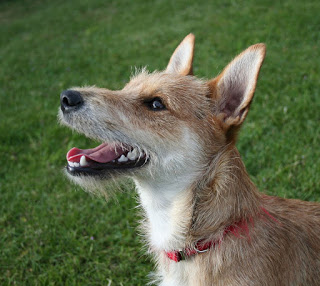
Further reading:
King, T., Marston, L.C. & Bennett, P.C. (2012). Breeding dogs for beauty and behaviour: Why scientists need to do more to develop valid and reliable behaviour assessments for dogs kept as companions, Applied Animal Behaviour Science, 137 (1-2) 12. DOI: 10.1016/j.applanim.2011.11.016
Ley, J., Bennett, P. & Coleman, G. (2008). Personality dimensions that emerge in companion canines, Applied Animal Behaviour Science, 110 (3-4) 317. DOI: 10.1016/j.applanim.2007.04.016
King, T., Marston, L. & Bennett, P. (2011). Development of the Monash Canine Amicablity Assessment (MCAA), Journal of Veterinary Behavior: Clinical Applications and Research, 6 (1) DOI: 10.1016/j.jveb.2010.08.033
© Mia Cobb 2012
- Getting Practical: Do Non-experts Make The Same Behavior Assessments Of Working Dogs As Experts?
Guest post by: Jamie Fratkin, PhD First off, I just wanted to say that I love reading your blog! ('THANK You!' say Mia and Julie). I think it’s such a great platform to deliver the latest in dog research for both researchers and dog lovers,...
- Attachment: Measuring Our (varying) Relationships With Dogs.
Hi Julie, Right off the bat I need to say YES YES YES! Your last post about aggression and what we can learn from and about it WITHOUT the need to experience it was spot on. Are you THIS attached to your dog? (source)You’re also right that...
- Video Special: Cutest Thing Ever? Paws On The Face!
I'll start with some eye candy Hi Mia, "What do you think is the most common role of dogs these days?" As I read that in your last post, I blurted out, "companionship" (the guy sitting next...
- It's All About Objective Multiples...
sciseekclaimtoken-5036b68d5c7f8 First thoughts...Hey Julie! I hope you had a great weekend. Can I tell you more about assessing welfare? Hell to the yeah I can! (By the way, who gave you that photo of me working at 3:17am?!) I could...
- So Much Dog To Talk About. All The Time In The World!
(source)Hi Mia, Yowzer!! We have so much to talk about! Dogs eating poop, welfare assessment, behavioural needs, enrichment and the “guilty look” are only the beginning! Speaking of which, I’m sure you have at least 7,000 more words...
Dogs
Ideally amicable: beauty and behaviour (part 2)
Hellloooo Julie,
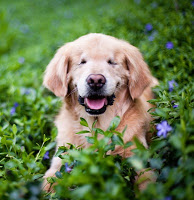 |
| (source) |
Isn’t it interesting that bigger eyes are a preferred attribute for attractiveness, yet we find animals covering their faces (and therefore obscuring their eyes!) super cute? The eyes have it, but they obviously aren’t the full story.
I look forward to hearing more!
While you tell me about what rings our bells in terms of physical looks, I'd like to get back to telling you about Tammie King's research into behaviour assessment and contemplating what behavioural traits we prefer in our companion dogs (Part 1 here).
I think I was up to telling you how Tammie set about creating an assessment with the aim of measuring the canine personality trait, ‘amicability’. She wanted to see if this was possible using a relatively SIMPLE protocol (because remember, we need this to be feasible for use in the real world).
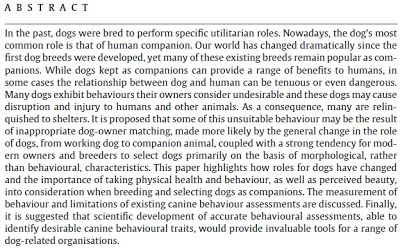 |
| (Abstract from King et al., 2012, details below) |
Tammie then gathered a focus group of dog behaviour experts (dog trainers, vets, people who work in animal shelters, breeders, etc. etc.) who independently watched videos of dogs who had undergone the pilot study and rated them on their level of amicability, based on a previously described list of attributes. There was a high level of agreement between which dogs the experts considered more or less amicable. This demonstrated that the protocol was able to elicit a range of behaviours which is excellent as it means we should be able to accurately identify what it was that enabled the experts to identify ‘amicable’ and ‘non-amicable’ dogs.
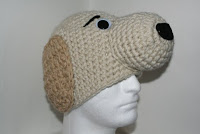 |
| (source) |
Tammie put her scientist hat back on and decided the most objective way to work out what was important to measure, was to begin by measuring absolutely every freaking behaviour, from every freaking angle. So she did. Data were collected from over 200 dogs and their owners.
Take a look at some of the footage:
She kept tally of all behavioural variables and went about conducting analyses to determine which variables to retain and which to discard, basically which ones were important in predicting ‘amicability’ Her ethogram is the king kong of canine ethograms.
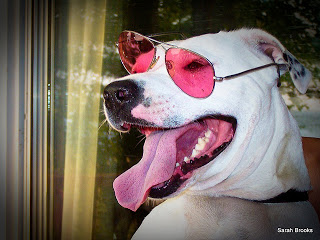 |
| (source) |
To further evaluate the assessment, Tammie asked two of the experts to rate ALL of the dogs to examine the intra-inter- rater reliability (which was very high = good!). Tammie also examined test-retest reliability and predictive validity. She also compared the owners’ reports of their dogs’ amicability. Interestingly, experts and owners don’t always agree.
Dogs were behaving differently than owners expected. This might be due to a number of factors. Perhaps the assessment only offers a small snapshot of the dogs’ behaviour in the limited time available; perhaps owners are biased at look at their dogs through rose tinted glasses, etc.
After a whole lot of statistical analysis, Tammie was able to determine which behavioural variables best predict ‘amicability’. The amount of contact the dog made with the stranger, its locomotion, vocalisations, time spent in particular areas of the arena and body posture were all considered important.

Tammie has copped a bit of flack from ‘concerned individuals’ who seem afraid that this assessment will be the be-all-and-end-all of dog temperament tests and that every dog will be forced to be AMICABLE.
But honestly, this is just a starting step. Step 1 in developing an accurate behaviour assessment for dogs, using the canine personality dimension of ‘amicability’ as a test case.
Tammie won’t really know how successful it is as a test protocol until a lot more data is collected from many dogs far and wide. Longitudinal data would be helpful, as would examining different breeds, puppies to adults, dogs from varying regions, etc. etc. Tammie also believes strongly that having a test like this in existence does not mean we take the emphasis off TRAINING dogs. We still need educate people about dog behaviour, welfare and training to ensure dogs and people live together harmoniously.

Dogs, like people and other animals, are constantly evolving. Perhaps some of the newer dog types around are already being selected for amicability without people realising it? Perhaps new breeds might be developed for this identified niche of FAMILY PET/COMPANION dog. This still leaves room for the people who want whatever dog they want and leaves them free to train it to do what they want.
Tammie suggests we will benefit from being TRANSPARENT about the sort of dog/s we have. Because having ACCURATE information on our dogs’ behaviour can help us make informed decisions regarding their breeding, training, housing and socialisation requirements. It has the potential to help with dog-owner matching, breeding decisions, etc. and also pave the way for future behaviour assessments aimed to measure other traits. In my mind, that has to be a good thing!
So what about their looks?
Are there physical traits that could also make for better companion animals?
Are there physical traits that could also make for better companion animals?
Mia
Further reading:
King, T., Marston, L.C. & Bennett, P.C. (2012). Breeding dogs for beauty and behaviour: Why scientists need to do more to develop valid and reliable behaviour assessments for dogs kept as companions, Applied Animal Behaviour Science, 137 (1-2) 12. DOI: 10.1016/j.applanim.2011.11.016
Ley, J., Bennett, P. & Coleman, G. (2008). Personality dimensions that emerge in companion canines, Applied Animal Behaviour Science, 110 (3-4) 317. DOI: 10.1016/j.applanim.2007.04.016
King, T., Marston, L. & Bennett, P. (2011). Development of the Monash Canine Amicablity Assessment (MCAA), Journal of Veterinary Behavior: Clinical Applications and Research, 6 (1) DOI: 10.1016/j.jveb.2010.08.033
© Mia Cobb 2012
- Getting Practical: Do Non-experts Make The Same Behavior Assessments Of Working Dogs As Experts?
Guest post by: Jamie Fratkin, PhD First off, I just wanted to say that I love reading your blog! ('THANK You!' say Mia and Julie). I think it’s such a great platform to deliver the latest in dog research for both researchers and dog lovers,...
- Attachment: Measuring Our (varying) Relationships With Dogs.
Hi Julie, Right off the bat I need to say YES YES YES! Your last post about aggression and what we can learn from and about it WITHOUT the need to experience it was spot on. Are you THIS attached to your dog? (source)You’re also right that...
- Video Special: Cutest Thing Ever? Paws On The Face!
I'll start with some eye candy Hi Mia, "What do you think is the most common role of dogs these days?" As I read that in your last post, I blurted out, "companionship" (the guy sitting next...
- It's All About Objective Multiples...
sciseekclaimtoken-5036b68d5c7f8 First thoughts...Hey Julie! I hope you had a great weekend. Can I tell you more about assessing welfare? Hell to the yeah I can! (By the way, who gave you that photo of me working at 3:17am?!) I could...
- So Much Dog To Talk About. All The Time In The World!
(source)Hi Mia, Yowzer!! We have so much to talk about! Dogs eating poop, welfare assessment, behavioural needs, enrichment and the “guilty look” are only the beginning! Speaking of which, I’m sure you have at least 7,000 more words...
